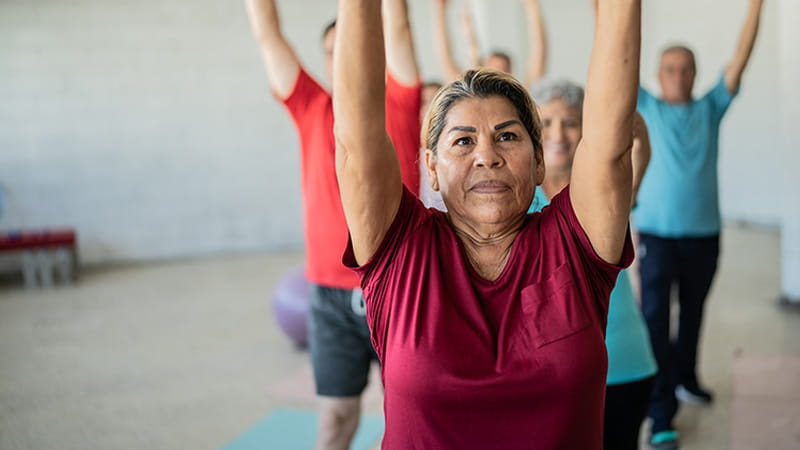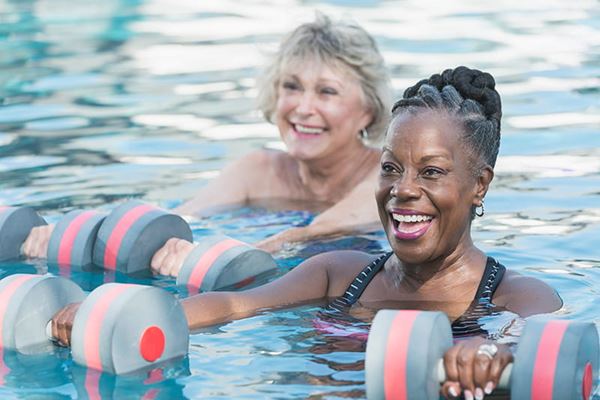Physical Activity

If getting back to exercising is your goal, make sure you communicate that and get a medical evaluation that might involve:
- Review of your preexisting health conditions that could affect your ability to exercise
- Review of new stroke-related deficits that might affect your ability to exercise
- An exercise assessment or test
- Review of your goals and preferences regarding your ideal exercise program
If your health care team determines you ...
… Should NOT start physical activities on your own, they can suggest a supervised exercise program for your situation and needs. Supervised support from a health care professional such as a physical therapist can include activities such as walking on a treadmill (with handrails) or riding a stationary bike or similar equipment.
… Can start exercising on your own, they can recommend the type and frequency of your physical activities based on your preferences and goals.
What if I never exercised in the past?
Or what if I’m simply not ready or am nervous to start?
If you feel you’re not ready to start exercising, consider joining a supervised exercise class that demonstrates the correct techniques to increase your self-confidence and ability to exercise.
It’s normal to feel nervous about exercising after a stroke, but exercise can be done safely with the right evaluation and advice from your health care team.
How do I know what type of exercise to do?
And how much exercise should I do?
It’s important to set goals to increase your current activity realistically. It’s easier to sustain an exercise program if you pick activities you’ve done before and are likely to enjoy. Talk with your health care team before starting an exercise program and continue to consult with them about your goals.
Staying Motivated
Dress for success.
- Wear comfortable, properly fitted sneakers or flat shoes with laces.
- Wear comfortable, loose-fitting clothing appropriate for the weather and the activity.
Make the time.
- Start slowly. Gradually build up to at least 30 minutes of activity on most or all days of the week (or whatever your doctor recommends).
- Exercise at the same time of day so it becomes a regular part of your lifestyle. For example, you might walk every Monday, Wednesday, Friday, Saturday and Sunday from noon to 12:30 p.m.
- Find a convenient time and place to do activities. Try to make it a habit but be flexible. If you miss an exercise opportunity, work activity into your day another way.
Keep reasonable expectations of yourself.
- If you have health issues, check with your health care professional before beginning a physical activity program.
- Look for chances to be more active during the day. Walk the mall before shopping, take the stairs instead of the escalator or take 10- to 15-minute breaks while watching TV or sitting for strength and balance exercises.
- Don’t get discouraged if you stop for a while. Get started again gradually and work up to your old pace.
- Don’t exercise too vigorously right after meals, when it’s very hot or humid, or when you just don’t feel up to it.
Make it fun.
- Choose activities that are fun, not exhausting. Add variety. That way, physical activity will never seem boring or routine. Do yoga one day, swim the next, then go for a bike ride on the weekend.
- Ask family and friends to join you — you may be more likely to stick with it if you have company.
- Use music or audiobooks to keep you entertained.
Track and celebrate your success.
- Note your activities on a calendar or in a log. Write down the distance or length of time of your activity and how you feel after each session.
- Keep a record of your activities. Reward yourself at special milestones with nonfood items, such as a small gift or a shopping trip. Nothing motivates like success!
